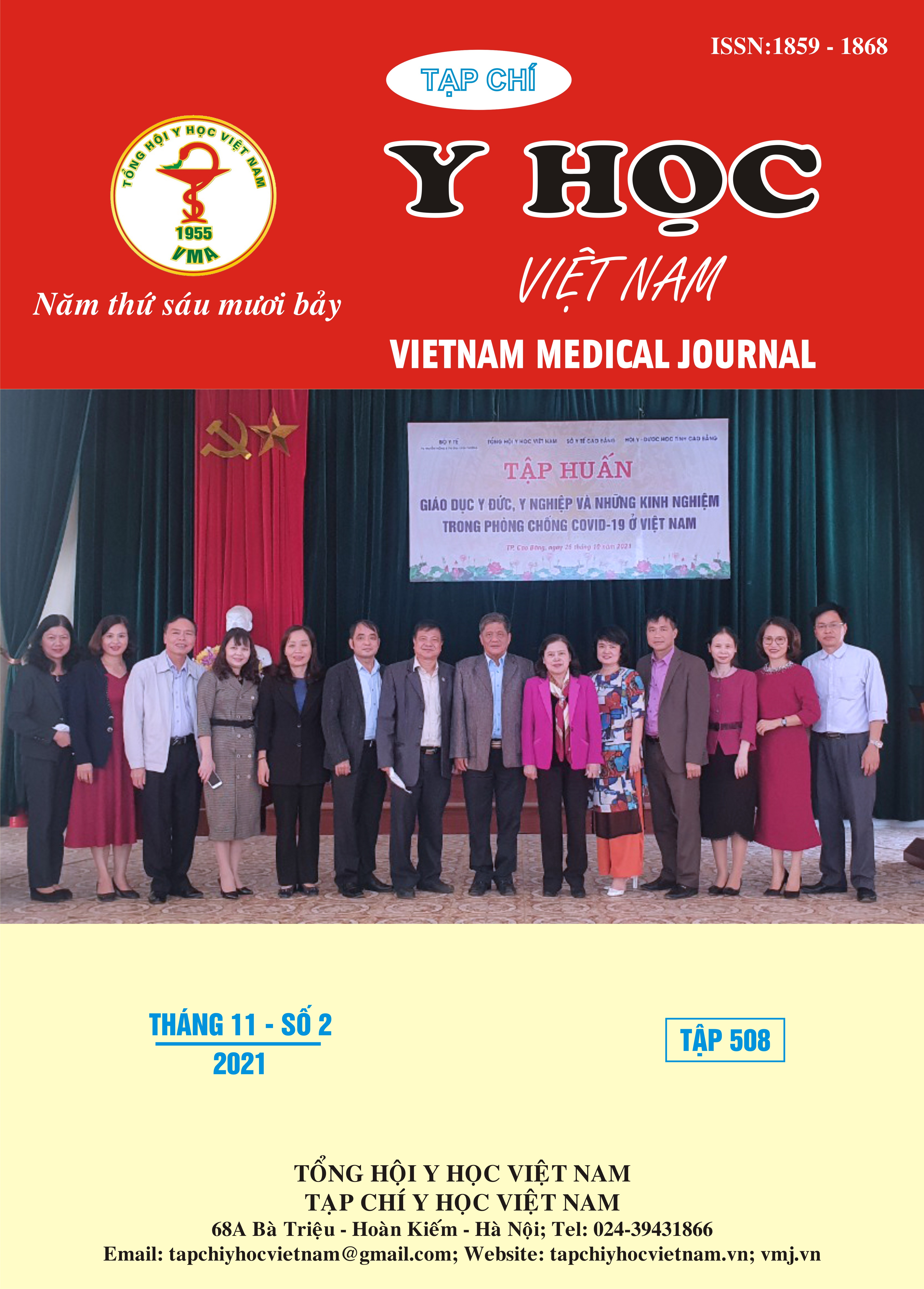NUTRITIONAL STASTUS OF THE OFFICERS UNDER THE MANAGEMENT OF THE THAI BINH PROVINCIAL STANDING COMMITTEE
Main Article Content
Abstract
Objective: The study aimed to assess the nutritional status of the officers under the management of the Thai Binh Provincial Standing Committee. Subjects: Surveyed included 800 incumbent officials and retired officials. Method: The epidemiological method described by a cross-sectional investigation. Evaluate nutritional status by body mass index BMI, WHR, Blood test indicators: Serum Albumin, Cholesterol, Triglycerides, LDL-cholesterol, HDL-cholesterol. Results: The results showed that the prevalence of overall CED was 0.6%. The prevalence of overall overweight was 14.4%, The prevalence of overweight in women (7.3%) was lower than that of men (15.8%). The percentage of officials at risk of being overweight based on the WHR index was 43.1%, of which female was 44.5% higher than male was 42.8%. Health classified as B1 had the highest rate of 88.9%, type A was 7.1%, type B2 was 3.2%, type C was 0.8%. Albumin was 43.6 ± 4.6g/l; Protein was 70.0 ± 8.1g/l, Glucose was 6.7 ± 1.5 mmol/l, Cholesterol is 5.29 ± 0.66 mmol/l; Triglyceride was 2.26 ± 0.9 mmol/l; H-DLC was 1.96 ± 0.68 (mmol /l); L-DLC was 2.91 ± 0.56 mmol/l.
Article Details
Keywords
BMI, WHR, CED, Overweight, Health classified, Albumin, Triglycerid, Cholesterol, H-DLC, L-DLC
References
2. Harald J. Schneider, Heide Glaesmer, and Jens Klotsche (2007), "Accuracy of Anthropometric Indicators of Obesity to Predict Cardiovascular Risk", The Journal of Clinical Endocrinology & Metabolism 92(2), pp. 589 –594.
3. Mabel Deurenberg-Yap, et al. (1999), "Manifestation of cardiovascular risk factors at low levels of body mass index and waist-to-hip ratio in Singaporean Chinese", Asia Pacific J Clin Nutr 8(3), pp. 177–183.
4. WHO (2011), Global status report on noncommunicable diseases 2010, WHO press, Geneva, Switzerland.
5. Nguyễn Đào Dũng, Lê Quý Phúc, Võ Văn Lượng (2006), "Khảo sát rối loạn lipid máu ở bệnh nhân có bệnh lý tim mạch ", Kỷ yếu tóm tắt báo cáo khoa học - hội nghị khoa học tim mạch toàn quốc lần thứ XI, p. 63.
6. Viện Dinh dưỡng Quốc gia (2006)), Kết quả điều tra thừa cân-béo phì và một số yếu tố liên quan ở người Việt Nam 25-64 tuổi,, Đề tài nghiên cứu khoa học cấp Bộ.
7. Viện Dinh dưỡng Quốc gia (2012), Báo cáo tóm tắt tổng điều tra dinh dưỡng 2009-2010, Chiến lược quốc gia về dinh dưỡng tầm nhìn 2011-2020 và tầm nhìn đến năm 2030.
8. Đỗ Đình Xuân, Trần Văn Long(2009), "Khảo sát tình trạng rối loạn lipid máu ở nhóm người trên 40 tuổi tại một số tỉnh thuộc đồng bằng Bắc Bộ", Tạp chí y học thực hành. 662(5), pp. 52-54.
9. WHO (2003), Chế độ ăn, dinh dưỡng và dự phòng các bệnh mạn tính. Sách dịch- Viện Dinh dưỡng. Geneva., 170.


